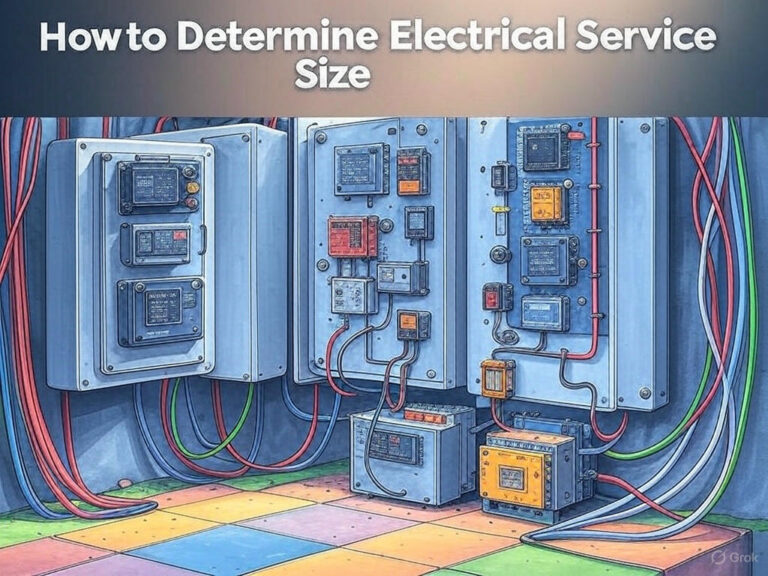Circuit Breaker Testing Requirements: Important Guide
Circuit breakers are essential components of electrical systems, designed to interrupt power during faults or overloads, preventing damage to equipment and ensuring safety. Proper maintenance and testing of circuit breakers are critical to guarantee their reliability, functionality, and longevity. This article outlines the circuit breaker testing requirements, highlighting key methods, procedures, and best practices for effective testing.

Table of Contents
Circuit Breaker Testing Requirements
Importance of Circuit Breaker Testing
Circuit breakers play a vital role in protecting electrical systems from faults like short circuits, overloads, and ground faults. If a circuit breaker fails to operate correctly, it can result in severe equipment damage, power outages, or safety hazards. Regular testing helps to:
- Ensure reliable performance under fault conditions
- Verify that the circuit breaker operates within its specifications
- Identify wear and tear that may lead to failure
- Extend the lifespan of the equipment
Types of Circuit Breakers
Understanding the type of circuit breaker is crucial to determine the specific testing requirements. Common types include:
- Air Circuit Breakers (ACBs): Typically used in low-voltage applications.
- Vacuum Circuit Breakers (VCBs): Ideal for medium-voltage applications.
- SF6 Circuit Breakers: High-voltage breakers that use sulfur hexafluoride gas for arc quenching.
- Oil Circuit Breakers: Use oil as an arc extinguishing medium, often in older systems.
Each type of circuit breaker has unique testing requirements, but some standard tests apply to all.
Circuit Breaker Testing Methods
1. Visual Inspection
Before performing any testing, conduct a thorough visual inspection to identify physical issues such as:
- Damaged or corroded components
- Loose connections or wiring issues
- Accumulation of dirt, dust, or debris
- Cracks or wear on insulation materials
2. Insulation Resistance Test
This test measures the insulation resistance between live parts and grounded parts to ensure there are no insulation failures. A megger is commonly used for this purpose.
- Procedure: Disconnect the circuit breaker and apply a voltage to measure resistance.
- Acceptance Criteria: The resistance should meet the manufacturer’s specifications, typically in the megohm range.
3. Contact Resistance Test
This test evaluates the condition of the breaker’s internal contacts. High resistance indicates wear or corrosion.
- Equipment: Micro-ohmmeter or low-resistance ohmmeter.
- Procedure: Measure resistance across closed contacts.
- Acceptance Criteria: Resistance values should be within the specified limits (usually very low).
4. Trip Unit Testing
The trip unit is the brain of the circuit breaker, responsible for detecting faults and triggering the breaker. Testing includes:
- Overcurrent Protection: Simulate fault currents to verify tripping.
- Time-Current Characteristic Test: Measure how quickly the breaker trips under different fault conditions.
5. Dielectric Testing
Dielectric tests verify the circuit breaker’s ability to withstand high voltage without breakdown.
- Procedure: Apply a high voltage (higher than normal operating voltage) between the breaker’s terminals and its frame.
- Acceptance Criteria: No insulation failure should occur.
6. Mechanical Operation Test
This test evaluates the mechanical components of the breaker, including the opening and closing mechanisms.
- Procedure: Perform multiple open-close operations to ensure smooth functioning.
- Observations: Look for sluggish operation, excessive noise, or incomplete movements.
7. Timing Test
Timing tests measure the speed of the breaker’s opening and closing operations. The results indicate whether the breaker is responding within acceptable limits.
- Procedure: Use a breaker timing analyzer to measure the time intervals.
- Acceptance Criteria: Compare the measured times with the manufacturer’s specifications.
Circuit Breaker Testing Frequency
The frequency of circuit breaker testing depends on various factors, including the type of breaker, its operating environment, and its criticality in the system. Below are general guidelines:
- Visual Inspections: Quarterly or biannually
- Routine Tests: Annually
- Comprehensive Testing: Every 3–5 years, depending on usage and environment
- After Fault Testing: Immediately after the breaker has operated under fault conditions
Tools and Equipment for Circuit Breaker Testing
Accurate testing requires the right tools and equipment. Some commonly used devices include:
- Insulation testers (meggers)
- Micro-ohmmeters
- High-voltage test sets
- Breaker timing analyzers
- Multimeters
- Infrared thermography cameras for thermal inspections
Best Practices for Circuit Breaker Testing
- Follow Manufacturer Guidelines: Always refer to the manufacturer’s manual for specific testing procedures and criteria.
- Use Calibrated Equipment: Ensure all testing devices are regularly calibrated for accuracy.
- Document Results: Keep detailed records of all test results to track performance over time and identify trends.
- Prioritize Safety: De-energize the circuit breaker before testing and use proper personal protective equipment (PPE).
- Engage Qualified Professionals: Testing should be performed by trained and certified technicians.
Common Issues Identified During Testing
Testing often reveals issues that may impact the breaker’s performance. Some common problems include:
- Worn or pitted contacts
- Insulation degradation
- Misalignment of mechanical components
- Trip unit calibration errors
- Accumulated dirt or debris
Timely detection and rectification of these issues ensure the breaker remains reliable and safe to operate.
Conclusion
Regular and thorough testing of circuit breakers is essential to ensure the safety, reliability, and efficiency of electrical systems. Adhering to standard circuit breaker testing requirements not only minimizes downtime but also prevents costly equipment failures and safety incidents. By following the testing methods and best practices outlined in this article, you can maintain optimal performance and extend the lifespan of your circuit breakers.
Most Asked Questions and Answers on Circuit Breaker Testing Requirements
1. Why is circuit breaker testing important?
Testing ensures that circuit breakers operate reliably during faults, protecting electrical systems and personnel. It verifies performance, checks for wear and tear, and ensures compliance with safety and regulatory standards.
2. What are the key parameters checked during circuit breaker testing?
The key parameters include:
Insulation resistance: To ensure proper insulation between phases and ground.
Contact resistance: To verify low resistance across closed contacts.
Trip and close timing: To ensure accurate response during operation.
Dielectric strength: To assess the breaker’s ability to withstand high voltages.
Mechanical operation: To test the reliability of opening/closing mechanisms.
3. What types of circuit breaker tests are typically performed?
Visual Inspection: Checking for physical damage or wear.
Dielectric Tests: Measuring insulation resistance and withstand voltage.
Timing Tests: Measuring opening, closing, and contact bounce times.
Contact Resistance Tests: Ensuring minimal resistance across the breaker contacts.
Trip Test: Verifying proper operation of the protection mechanism.
Dynamic Resistance Measurement (DRM): Analyzing contact behavior during operation.
4. How often should circuit breakers be tested?
Visual inspections: Annually or more frequently in critical systems.
Routine testing: Every 1–3 years depending on the manufacturer’s recommendations and system criticality.
After faults or major operations: Testing is mandatory to ensure functionality.
High-voltage breakers: Usually require testing every 3–5 years.
5. What is the difference between primary and secondary injection testing?
Primary Injection Testing: Involves applying high current through the breaker to test the entire protection system, including CTs and trip mechanisms.
Secondary Injection Testing: Tests the relay and trip circuit using simulated signals without high current.
Subscribe our Newsletter to get the latest updates in Electrical Engineering.
Worth Read Posts
#CircuitBreakerTesting, #ElectricalSafety, #ElectricalTesting, #CircuitBreakers, #TestingRequirements, #ElectricalMaintenance, #ElectricalEngineering, #SafetyStandards, #PowerSystemTesting, #ElectricalInspection, #BreakerTesting, #PowerSystems, #ElectricalEquipment, #SystemReliability, #IndustrialSafety





